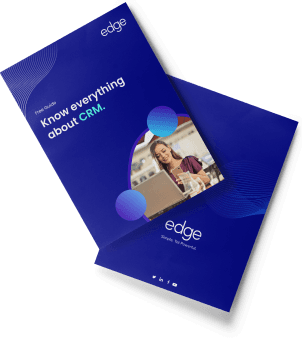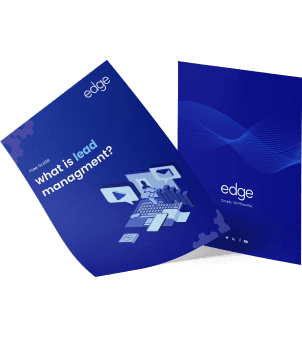Table of Content
1. Introduction
2. What is drip email?
3. Types of email drip campaigns?
4. What is drip vs. trigger email?
5. Steps to create a drip email campaign
6. Best practices of an email drip campaign
7. Software/tools for email drip campaign
8. Conclusion
1. Introduction
Are you feeling restricted by tight budgets?
As marketers and sales reps, we often face the challenge of achieving more with limited resources. But guess what?
There's a secret weapon that can help you increase revenue without breaking the bank. By using the power of drip campaigns in your email outreach, you can drive higher engagement, conversions, and sales with minimal effort.
Curious to learn more? This article is your ticket to uncovering the secrets of successful email marketing.
From understanding what drip campaigns are all about, exploring different types, and learning how to create your own, we've got you covered.
Plus, we'll introduce you to the top tools that will take your campaigns to the next level.
Let's jump right in and explore the possibilities.
2. What is drip email?
Drip email campaigns are like a secret weapon in the world of marketing. They allow businesses to send targeted emails to their prospects or customers over time. Think of it as a gentle, consistent flow of communication, just like drops of water.
The main goal of a drip email campaign is to connect with your audience and build strong relationships. Each email in the sequence is carefully crafted to provide valuable content, educate, and guide the recipient along their journey. Every email has a purpose, whether it's encouraging the purchase or enticing them to sign up for a service.
The best part? Drip emails can be personalized based on specific triggers or actions. That means you can send tailored messages based on your audience's behavior, such as when they sign up for a newsletter or abandon a shopping cart. By segmenting your audience and creating targeted content, you can ensure your emails hit the mark every time.
The benefits are impressive. Drip email campaigns save you time, nurture leads, boost customer engagement, and improve conversion rates.
Drip email campaigns are a game-changer for engaging and nurturing prospects. It's like having your secret weapon in your marketing arsenal.
Suggested Reading, Top Sales Email templates
3. Types of email drip campaigns
Let's explore a range of drip campaigns that can help you nurture your prospects and leads. Get ready for some stunning examples of email drip campaigns that will give you valuable insights.
I. Welcome Campaigns:
A warm and inviting introduction to your brand, these campaigns make a stellar first impression. By sending personalized emails, you greet new subscribers or customers, provide valuable resources, and lay the foundation for a lasting relationship.
II. Lead Nurture Emails:
Nurture your leads like a gardener tending to a budding plant. With a carefully crafted sequence of emails, you educate, build trust, and guide prospects along their buyer's journey. By addressing pain points and showcasing your expertise, you keep them engaged and primed for conversion.
III. Educational Campaigns:
Knowledge is power, and educational campaigns empower your audience with valuable insights. Through informative emails, industry tips, and thought-provoking content, you position yourself as a trusted authority. By sharing knowledge, you earn credibility and create a loyal following.
IV. Onboarding Campaigns:
Make a splash with onboarding campaigns to help customers understand your product or service. Step by step, you guide them through the process, providing support, resources, and tips to ensure a seamless and successful onboarding experience.
V. Post-Demo Campaigns:
After an impressive product demo, keeping that excitement alive is crucial. Post-demo campaigns strike while the iron is hot. By reinforcing key benefits, addressing questions, and sharing success stories, you nudge prospects closer to making that purchase.
VI. Re-engagement Campaigns:
Lost touch with some of your audience? Re-engagement campaigns come to the rescue. With enticing offers, personalized messages, and exclusive content, you reignite their interest and bring them back into the fold.
VII. Abandoned Cart Campaigns:
Don't let those abandoned carts go to waste! Abandoned cart campaigns swoop in with a sense of urgency. You entice customers to complete their purchases and reclaim those lost sales through persuasive emails, product recommendations, and limited-time offers.
VIII. Unsubscribe Emails:
Even when someone decides to part ways, you can make their exit positive. Unsubscribe emails offer a graceful farewell. You can ask for feedback, provide alternative options, or express gratitude for your time with your brand.
IX. Upsell/Cross-sell Campaigns:
Once a customer, always an opportunity. Upsell and cross-sell campaigns capitalize on your existing customer base. By showcasing complementary products or services based on past purchases, you entice them to take their experience to the next level.
These drip email campaigns have the unique power to engage, convert, and build relationships.
4. What is drip vs. trigger email?
Drip and triggered are powerful tools in email marketing, but they serve different purposes and have distinct characteristics.
Drip Email Campaigns:
Drip emails are pre-planned and automated email sequences sent to a group of recipients over some time. These campaigns are designed to nurture leads, build relationships, and guide recipients through the buyer's journey. Drip emails are typically scheduled based on predefined time intervals or specific triggers, such as when a user signs up or completes a purchase. The focus is on delivering relevant and engaging messages to keep the audience engaged and move them closer to conversion.
Trigger Emails:
On the other hand, trigger emails are sent in direct response to a specific action or event. These emails are highly targeted and personalized, triggered by a user's behavior or interaction with your website or app. For example, a trigger email can be automatically sent when a user abandons a shopping cart or completes a specific action. Trigger emails deliver timely and relevant messages based on the recipient's specific behavior, aiming to prompt immediate action or address specific needs.
While drip email campaigns are planned and scheduled to nurture leads over time, trigger emails are instant and triggered by specific user actions.
Both types of emails are effective in their ways and can be used strategically to engage and convert prospects into loyal customers.
Suggested Reading, How to send follow-up emails
5. Steps to create a drip email campaign
Creating a drip email campaign is a strategic process that involves careful planning and execution. Here are the steps to guide you in creating an engaging and effective drip email campaign:
Step 1: Define Your Campaign Goals:
Start by clearly defining the goals of your drip email campaign. Are you aiming to nurture leads, promote a new product, or re-engage inactive customers? Having a clear objective will help shape the direction of your campaign.
Step 2: Segment Your Audience:
Divide your email list into relevant segments based on demographics, interests, or previous interactions. It lets you personalize your messages and deliver targeted content that resonates with each segment.
Step 3: Determine the Email Sequence:
Plan the sequence of emails you will send to your audience. Consider the number of emails, timing, and the specific content or call-to-action for each email. Gradually guide your recipients through the customer journey with a carefully designed sequence.
Step 4: Craft Compelling Content:
Write engaging, personalized email content that captures your recipients' attention and addresses their pain points. Use a conversational tone and provide valuable information or exclusive offers to encourage action.
Step 5: Design Eye-Catching Templates:
Create visually appealing email templates that align with your brand and enhance the user experience. Use attention-grabbing subject lines, compelling images, and clear calls to action to drive engagement.
Step 6: Set up Automation:
Utilize a personalized email automation platform to schedule and automate the delivery of your drip emails. It ensures timely and consistent communication with your audience.
Step 7: Monitor and Optimize:
Regularly track the performance of your drip email campaign by analyzing key metrics such as open rates, click-through rates, and conversion rates. Use this data to identify areas for improvement and make necessary adjustments.
Step 8: Continuously Improve:
A drip email campaign is an iterative process. Gather feedback from your recipients, conduct A/B testing, and incorporate learnings to optimize your campaign over time. Stay agile and adapt as needed to achieve the best results.
Let's understand with an example:
Suppose you're launching a new online course, and your goal is to convert leads into course enrollees.
Segment your audience based on their level of interest or familiarity with your course topics, such as beginners, intermediate, and advanced learners.
Start with a welcome email introducing the course and a series of educational emails highlighting the benefits and key topics covered. Finally, send a reminder email with a limited-time discount to encourage enrollment.
Share success stories from previous course participants, offer tips and insights related to the course topic, and provide a sneak peek of course materials.
Incorporate visuals related to the course topic, use an enticing subject line like "Unlock Your Full Potential with Our Exclusive Course," and include a prominent "Enroll Now" button.
Set up triggers, such as when a lead signs up for the course, and automate the email sequence to be sent at specified intervals.
If you notice low click-through rates on a particular email, consider revising the content or adjusting the delivery timing.
Analyze feedback from course enrollees, conduct split tests on subject lines or email designs, and make improvements based on user preferences.
By following these steps and incorporating your creativity and industry knowledge, you can create a compelling drip email campaign that effectively engages your audience and drives desired outcomes for your business.
6. Best practices of an email drip campaign
Here are some of the drip campaign's best practices:
Keep drip campaign emails concise yet informative to guide recipients toward the CTA efficiently.
End each email with a tailored CTA that prompts action based on the recipient's buyer's journey stage.
Consider Fridays for higher open and click-through rates, but analyze your metrics for optimal sending times.
A/B tests different send times to find the most effective schedule for your drip emails.
Track open rates, CTR, and CTOR to assess campaign success and optimize engagement.
Persistently follow up with leads, providing value and considering a "breakup" email if there is no response.
Gather feedback from non-converting leads through surveys to refine your drip campaign and engage prospects better.
7. Software/tools for email drip campaign
Before choosing a drip campaign tool, consider these three key factors:
I. Streamlined Email & Workflow Builder:
Create, schedule, and trigger emails with ease. Look for software that simplifies the process, allowing you to design captivating campaigns effortlessly.
II. Comprehensive Reporting:
Gain insights into crucial metrics that drive optimization. Track open rates, click-through rates, and other performance indicators to refine your strategy and achieve better results.
III. Transparent Pricing:
Evaluate the pricing structure to ensure it aligns with your needs. Check if it's based on subscribers, emails sent, or a combination. Find a plan that offers dedicated drip email functionality without breaking the bank.
Don't waste time scheduling trials or demos for each tool.
Our comprehensive guide reveals the top 4 email drip campaign software, providing an inside look at their features and benefits.
Let's dive in and make an informed choice for your campaign's success.
1. Mailchimp:
As a household name in the email marketing world, Mailchimp offers an intuitive interface and a wide range of features. It's your go-to platform for creating beautiful emails, segmenting your audience, and effortlessly automating drip campaigns. With its user-friendly drag-and-drop builder, you can design eye-catching emails quickly.
2. Zoho CRM:
Beyond traditional email marketing, Zoho CRM offers a robust customer relationship management solution. With its email drip campaign functionality, you can automate personalized messages based on customer behaviour and preferences. Integrating with other Zoho products allows you to streamline your marketing efforts and deliver exceptional customer experiences.
3. Edge CRM:
Tailored specifically for all types of businesses, Edge CRM is a fantastic choice. Alongside contact management and sales pipeline tracking, it offers many features. Create targeted emails, set up triggers, and monitor engagement to drive conversions and foster strong customer relationships.
4. ActiveCampaign:
Unlock the power of automation with ActiveCampaign. This platform empowers you to create highly personalized email drip campaigns that resonate with your audience. With advanced segmentation, behaviour tracking, and dynamic content options, you can nurture leads at every stage of the buyer's journey. The visual automation builder simplifies creating complex workflows, ensuring your campaigns are effective and engaging.
8. Conclusion
So, are you ready to start your email drip campaign?
Enhancing your email drip campaign is the key to captivating your audience, retaining loyal clients, converting leads into customers, and boosting sales. In this blog, we have discussed all drip email campaigns, steps to create Email Drip Campaigns, etc.
Your emails play a vital role, so craft compelling content that resonates with your audience precisely when they need it most. Don't wait & accelerate your business with an email drip campaign.
So, go forth and unleash the potential of these campaigns in your marketing arsenal. Happy dripping!













